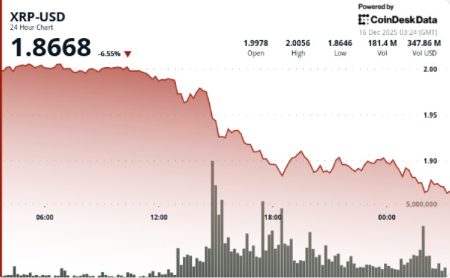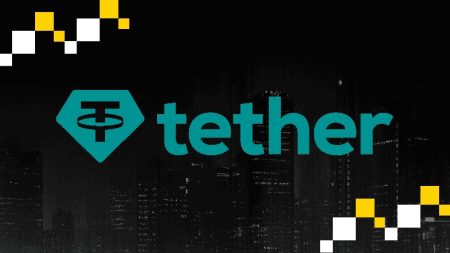Circle Launches Arc Blockchain Network Testnet with Major Financial and Tech Players
Global Banking and Tech Giants Join Circle’s New Layer-1 Blockchain Initiative
In a significant development for blockchain infrastructure, USDC stablecoin issuer Circle has launched the public testnet for its highly anticipated Layer-1 blockchain network, Arc. The Tuesday announcement revealed participation from an impressive roster of over 100 companies, including financial powerhouses BlackRock and Visa, alongside tech giant Amazon Web Services. This move signals growing mainstream acceptance of blockchain technology as a fundamental component of future financial infrastructure.
Circle CEO Jeremy Allaire emphasized the project’s “remarkable early momentum” in a press release, highlighting Arc’s potential to revolutionize global finance. “Arc presents the opportunity for every type of company to build on enterprise-grade network infrastructure—advancing a shared vision that a more open, inclusive, and efficient global economic system can be built natively on the internet,” Allaire stated. The testnet represents a crucial developmental milestone, providing a separate blockchain environment that mimics the main network using simulated assets. This allows developers to test new features and applications without compromising the security of an eventual live mainnet.
Wall Street Embraces Blockchain Technology with Unprecedented Participation
The scale of institutional engagement with Arc’s testnet is unprecedented, with Circle reporting participation from companies representing “billions of users.” Traditional financial institutions that have historically approached blockchain technology with caution are now actively exploring its capabilities through Arc. Established Wall Street giants including BlackRock, Deutsche Bank, Goldman Sachs, HSBC, and Standard Chartered have joined the testnet alongside financial infrastructure providers BNY Mellon, Intercontinental Exchange, and State Street. This convergence of traditional finance with blockchain technology suggests a significant shift in how financial institutions view distributed ledger technology – no longer as an experimental curiosity but as essential infrastructure for future financial systems.
The diversity of participants extends beyond traditional financial institutions to include established technology and payments companies. Amazon Web Services is bringing its cloud computing expertise to the network, while cybersecurity leader Cloudflare is contributing its infrastructure knowledge. Payment giants Mastercard and Visa – companies that blockchain technology was once predicted to disrupt – are now actively participating in its development. Major cryptocurrency exchanges including Coinbase, Kraken, and Robinhood have also joined the testnet, creating a unique ecosystem where traditional financial institutions, tech companies, and native digital asset businesses collaborate within a single network infrastructure.
Arc Positions Itself as an “Economic Operating System” with Enterprise-Grade Features
Circle has positioned Arc as more than just another blockchain – describing it as an “Economic Operating System” for the internet designed to bring more economic activity onto blockchain infrastructure. The network boasts several features specifically designed to address limitations that have historically prevented enterprise adoption of blockchain technology. These include predictable dollar-based fees, which eliminate the volatility concerns associated with cryptocurrency gas fees, and sub-second transaction finality that enables the real-time settlement crucial for many financial applications. The platform also offers optional privacy configurations, addressing compliance requirements for various institutions and use cases.
The technical architecture appears purpose-built for financial applications, with Circle specifically highlighting Arc’s suitability for lending, capital markets, foreign exchange, and global payments. By integrating with Circle’s existing platform infrastructure, Arc enables seamless use of stablecoins – digital currencies pegged to traditional currencies that provide the stability needed for business applications. This integration approach suggests Circle is pursuing an ecosystem strategy, creating a comprehensive financial infrastructure stack rather than isolated blockchain components. The platform’s emphasis on regulatory compliance, combined with enterprise-grade performance characteristics, distinguishes it from many existing blockchain networks that struggle to meet the requirements of regulated financial institutions.
Global Stablecoin Ecosystem Emerges with Regional Issuers Joining the Network
A notable development in the Arc testnet launch is the participation of multiple regional stablecoin issuers, indicating the emergence of a global digital currency ecosystem. Japanese yen-backed stablecoin issuer JPYC, Brazilian real-backed BRLA, and Canadian dollar-backed QCAD have all joined the testnet. This geographic diversity suggests Arc is positioned as a global financial network rather than a primarily US-centric platform. Circle, which issues the widely-used USD Coin (USDC) stablecoin, has indicated it is working to bring additional dollar and euro stablecoin issuers onto the platform, potentially creating a multi-currency network that could facilitate cross-border transactions and settlements.
The integration of multiple currency-backed stablecoins points toward Arc’s potential to simplify international payments and currency conversions – traditionally complex processes involving multiple intermediaries and settlement delays. By creating a common infrastructure for various currency-backed digital assets, Arc could enable more efficient cross-border transactions and potentially reduce friction in global trade finance. The participation of established financial institutions alongside regional stablecoin issuers suggests a vision where traditional banking infrastructure and newer digital asset systems converge rather than compete.
Path to Decentralized Governance Outlined as Circle Plans Long-Term Network Evolution
While Circle is currently stewarding Arc’s development, the company has outlined plans to transition the network toward distributed governance over time. This approach balances the need for initial development coordination with the longer-term benefits of decentralization. The company’s stated long-term vision includes expanding validator participation beyond founding members and establishing community-driven governance frameworks. This governance strategy appears designed to address concerns about centralization while maintaining the enterprise-grade reliability required by financial institutions.
The phased approach to decentralization reflects lessons learned from earlier blockchain projects, where immediate decentralization sometimes resulted in governance challenges. By starting with a coordinated development approach and gradually transitioning to more distributed control, Circle may be able to achieve both initial development efficiency and long-term network resilience. This evolutionary approach to governance, combined with the broad institutional participation already secured for the testnet, positions Arc as a potentially significant infrastructure component in the ongoing convergence of traditional finance and blockchain technology. As the project moves from testnet to eventual mainnet launch, the financial industry will be watching closely to see if Circle’s “Economic Operating System” vision can deliver on its promise to transform how financial services are built and delivered in the digital age.















